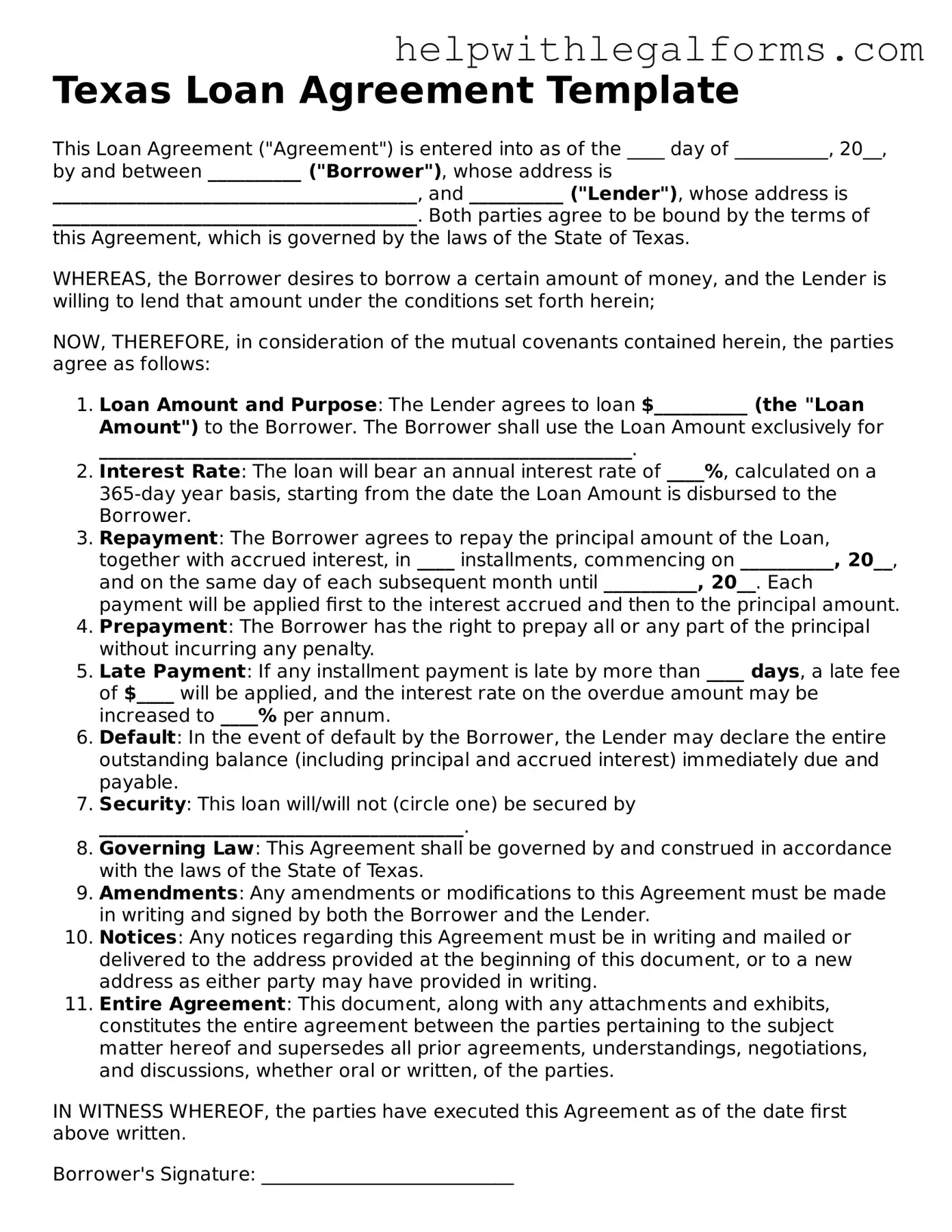What is a Texas Loan Agreement form?
A Texas Loan Agreement form is a legal document used when one party, known as the lender, agrees to lend money to another party, known as the borrower. This form outlines the terms and conditions of the loan, including the loan amount, interest rate, repayment schedule, and any collateral securing the loan. It serves to protect both the borrower's and lender's interests and ensure that both parties are clear on their obligations.
Who needs to sign the Texas Loan Agreement form?
The Texas Loan Agreement form must be signed by both the lender and the borrower to be considered legally binding. Additionally, if the loan is secured by collateral, any guarantors or co-signers must also sign the agreement. It's also a good practice to have the signatures notarized to further validate the document.
Is a witness necessary for a Texas Loan Agreement?
While Texas law does not specifically require a witness for the signing of a Loan Agreement, having a witness or a notary public can add an additional layer of validity and protection for the parties involved. This can be especially helpful in the case of disputes or if the agreement is contested in court.
Can I modify a Texas Loan Agreement after it has been signed?
Yes, a Texas Loan Agreement can be modified after it has been signed, but any modifications must be agreed upon by both the lender and the borrower. These modifications must be documented in writing and added as amendments to the original agreement. Both parties should sign any amendments, ideally in the presence of a notary public.
What happens if the borrower fails to repay the loan as agreed?
If the borrower fails to repay the loan according to the terms outlined in the Texas Loan Agreement, the lender has the right to take legal action to recover the owed money. This could include initiating a lawsuit or repossessing any collateral that was used to secure the loan. The specific course of action may depend on the details of the agreement and the nature of the collateral, if any.
Is it necessary to register a Texas Loan Agreement with any state or local government?
Generally, it is not necessary to register a Texas Loan Agreement with state or local government agencies for the agreement to be effective. However, if the loan is secured by real estate as collateral, filing a notice with the appropriate local government office may be required to ensure the lien's enforceability.
How can I ensure that my Texas Loan Agreement is legally binding?
To ensure your Texas Loan Agreement is legally binding, make sure it includes all the essential terms such as loan amount, interest rate, repayment schedule, and information about any collateral. Both parties should review the agreement thoroughly before signing. Obtaining the services of a notary public to witness the signing can also provide additional legal protection and assurance for all parties involved.
